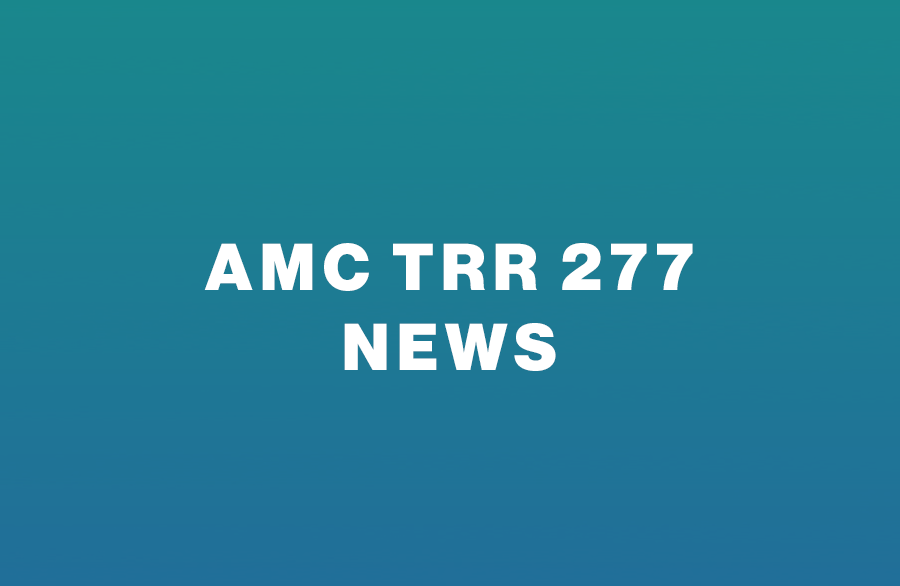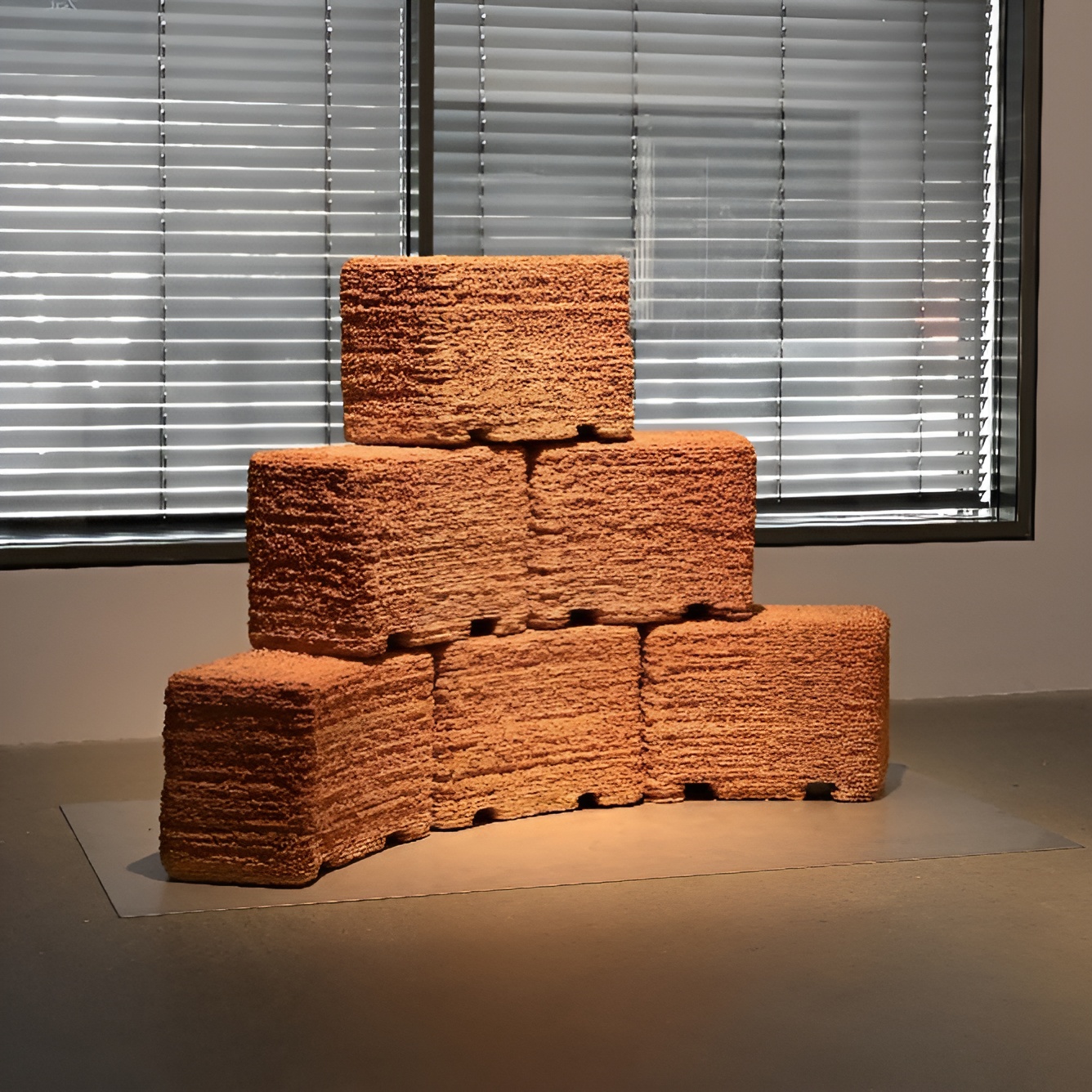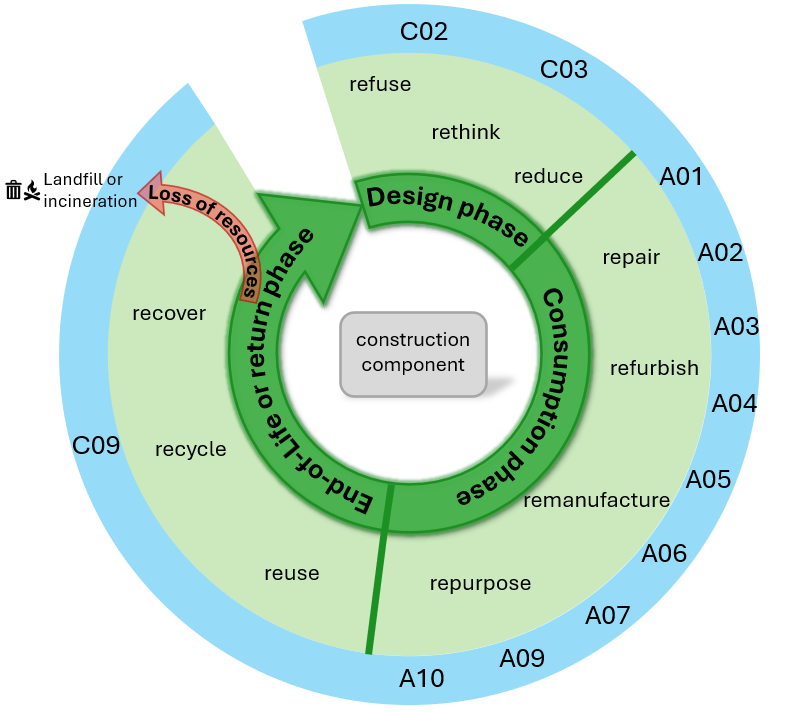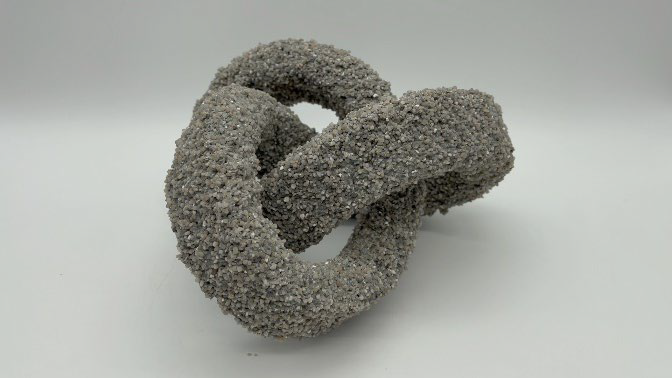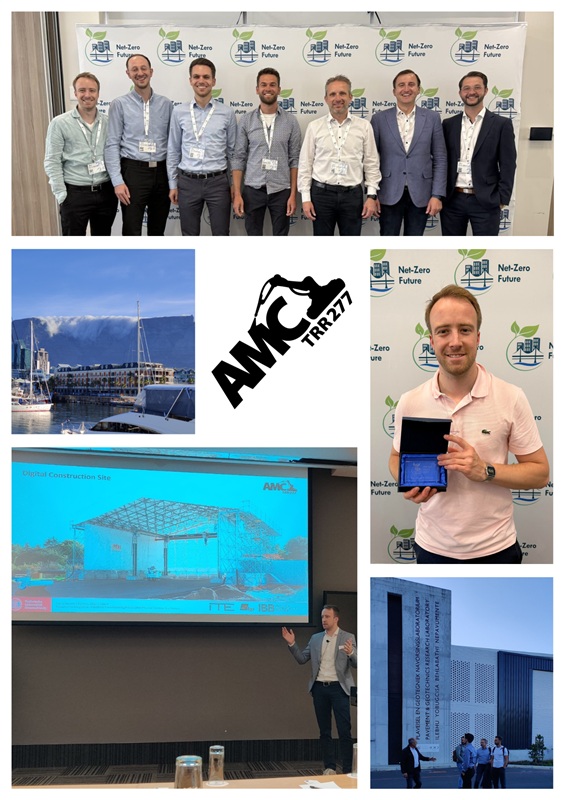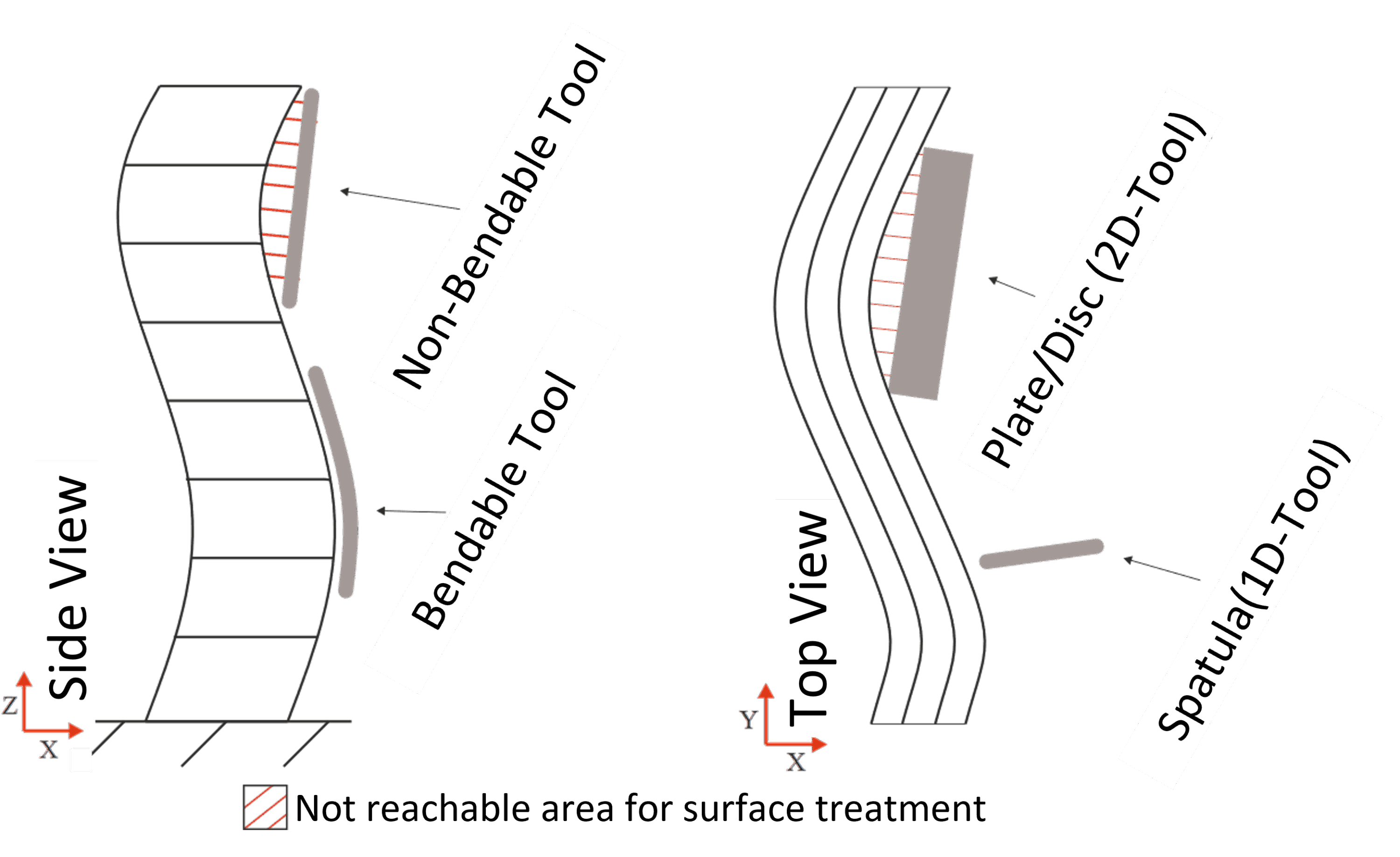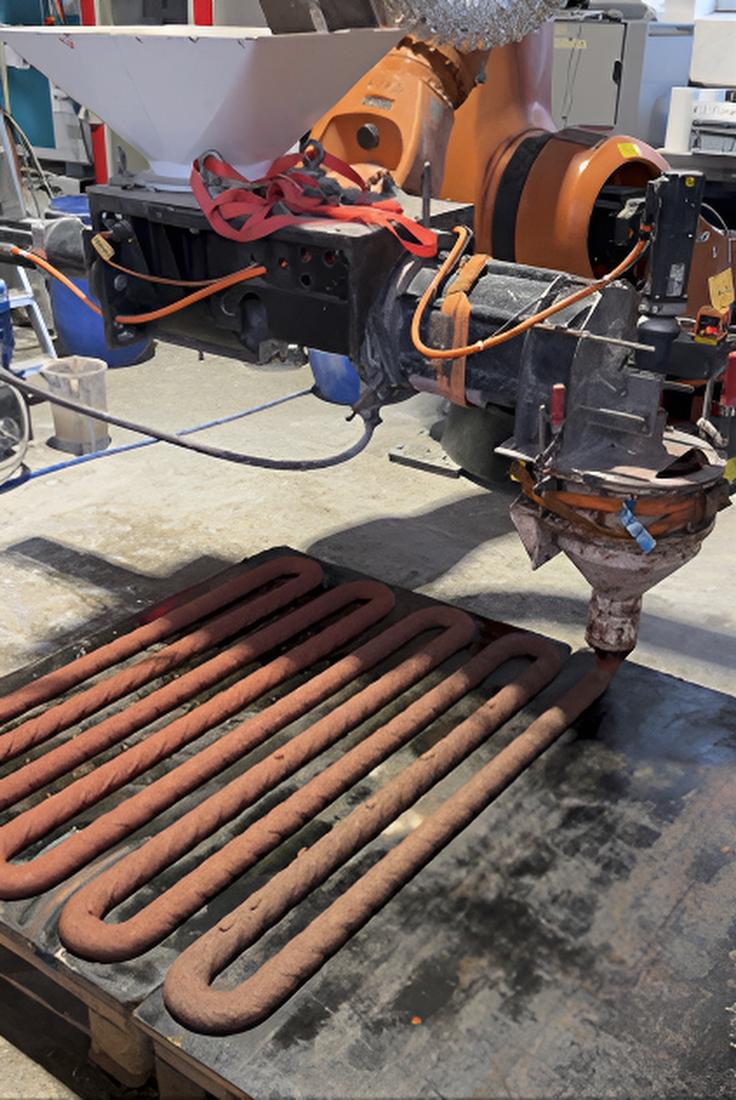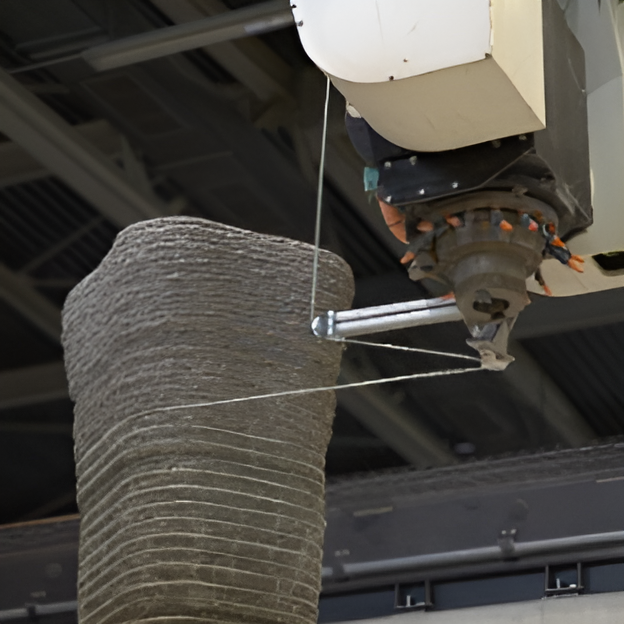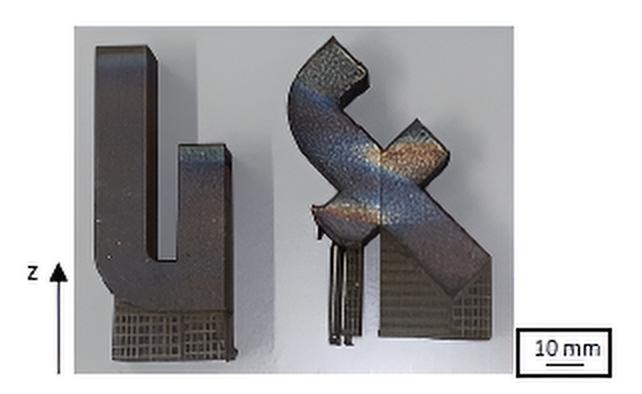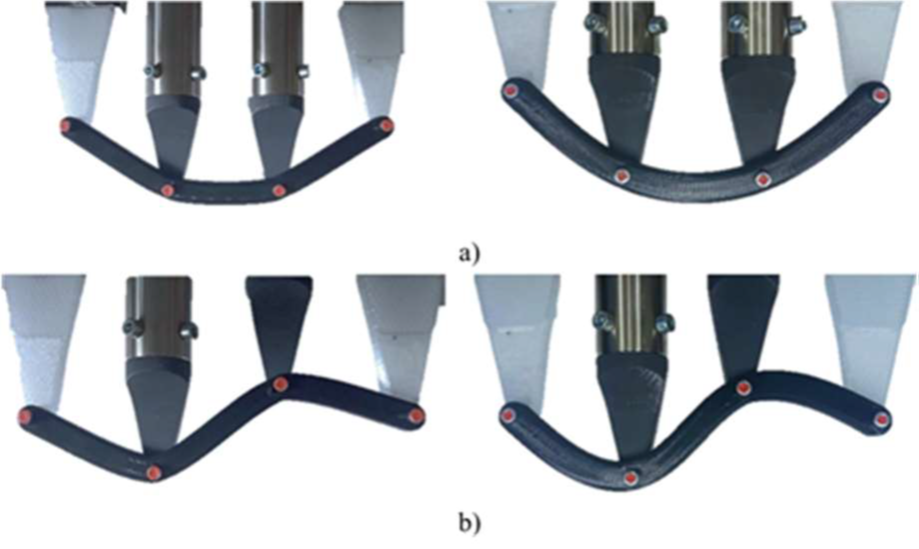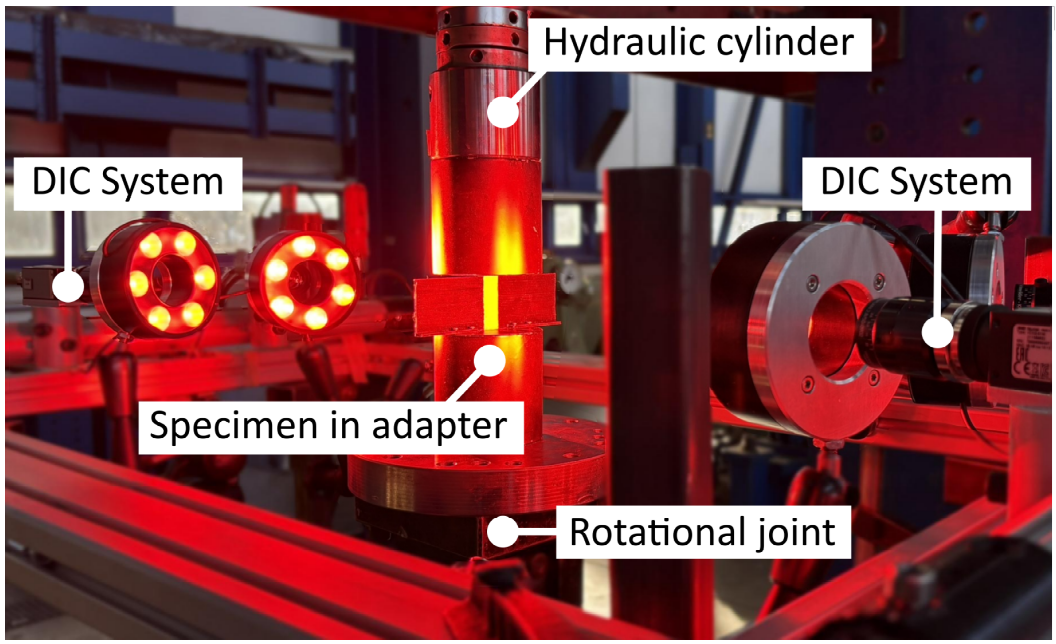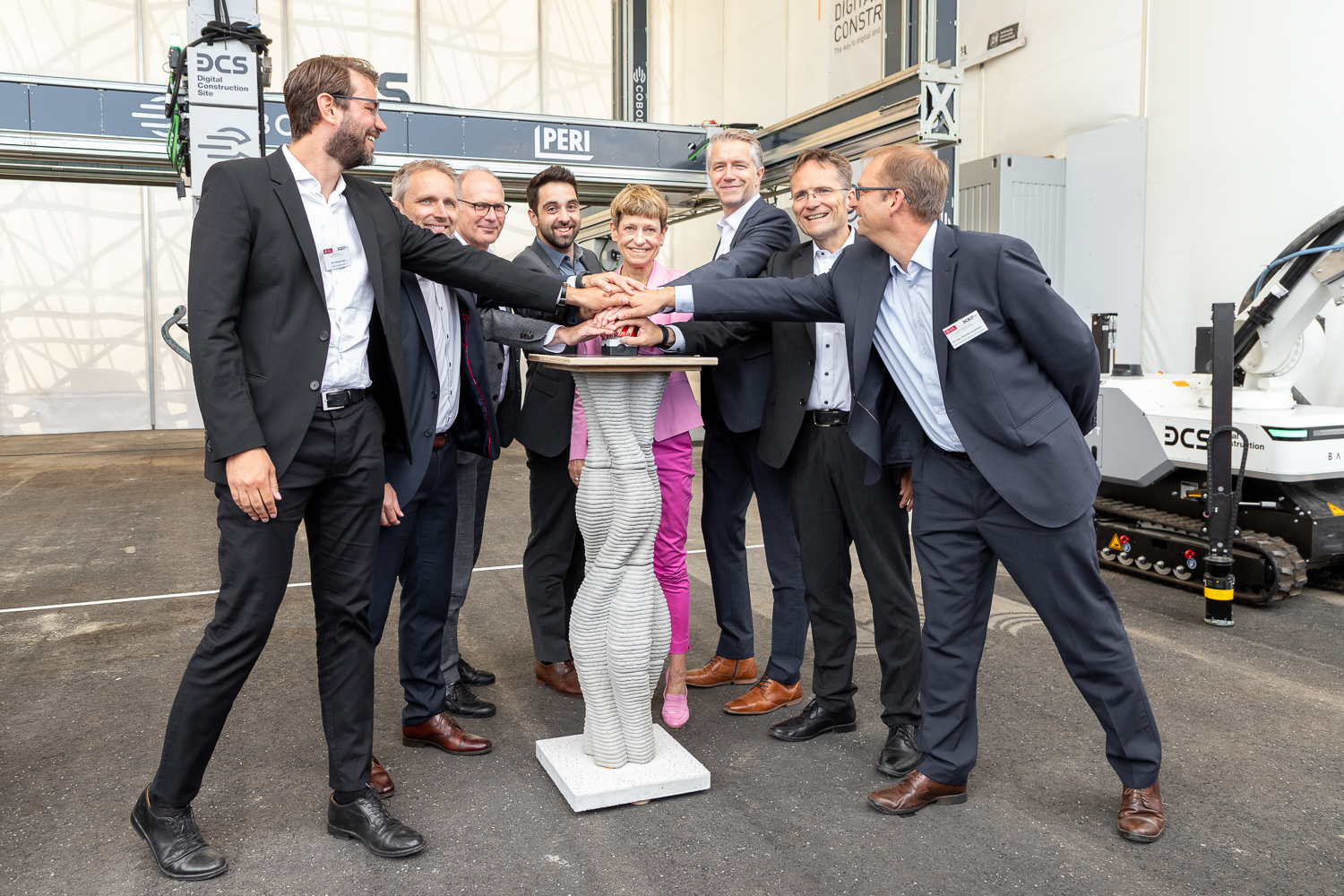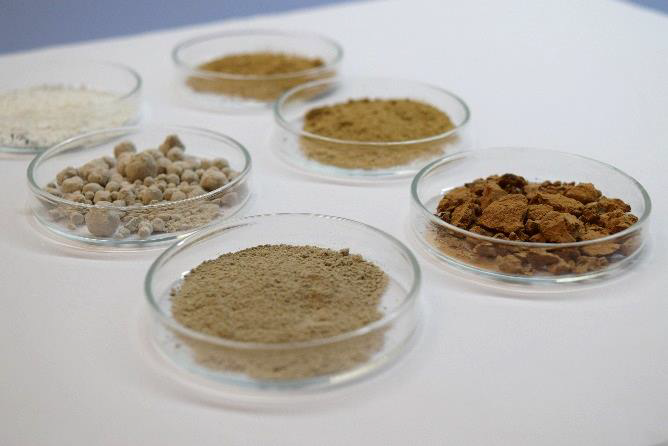News
Research Summary Report of B04
Category: Research Summary Report
Process Control and Adaptive Path Planning for Additive Manufacturing Processes Based on Industrial – Robots with an Extended Degree of Freedom [07.11.2025] Akica, Ilknur; Researcher, i.akica@tu-braunschweig.de Hürkamp, André; Project leader, a.huerkamp@tu-braunschweig.de TU Braunschweig, Institute of Machine Tools and Production Technology (IWF) Main Goal The integration of robot-guided additive manufacturing in the construction industry increases the degree of automation and can thus lead to an increased productivity and increased component quality. In shotcrete 3D printing (SC3DP), reproducible manufacturing results and ensuring component quality are major challenges, as the properties of shotcrete depend on many different parameters (e.g. temperature, pressure, water-cement ratio, hardening accelerator). The goal of this …
Research Summary Report of A10
Category: Research Summary Report
Earth Additive Manufacturing (EAM) – Material and Process Combinations for AM with Earth-based Materials [31.10.2025] Krakovská, Ema; Researcher, ema.krakovska@tum.de Prof. Dr. Kathrin Dörfler; Project leader, doerfler@tum.de Technical University of Munich, Professorship of Digital Fabrication Main Goal The primary research objective of A10 is to conceive and investigate two novel Earth Additive Manufacturing (EAM) processes, their material-process interactions, and their evaluation in large-scale architectural applications. Focusing on the characterisation of earth-based material mixtures (PL Machner), the project investigates a) Sprayed Earth Additive Manufacturing (SEAM) as a deposition-based process (PL Kloft) and b) Intrusion Earth Additive Manufacturing (IEAM) as a particle-bed-based …
Research Summary Report of C09
Category: Research Summary Report
Environmental Life Cycle Assessment – Determination of Ecological Sustainability Potentials by AMC [07.11.2025] Albrecht, Sophie Viktoria; Researcher, sophie.albrecht@oth-regensburg.de Thiel, Charlotte; Project leader, charlotte.thiel@oth-regensburg.de OTH Regensburg, Construction Materials Main Goal C09 aims to enhance the ecological sustainability of Additive Manufacturing in Construction (AMC) by quantifying and optimizing its environmental benefits through comprehensive Life Cycle Assessments (E-LCA) from cradle to cradle. This involves developing transparent Product Environmental Footprint Category Rules (PEFCR), identifying impactful reduction measures, and integrating circular design strategies to create durable, efficient, and reusable components. C09 enables early-stage, sustainability-focused decision-making, fostering material-efficient, low-impact construction practices and reducing the environmental footprint of the building sector. Summary …
Research Summary Report of C02
Category: Research Summary Report
3D Structural Puzzle – Numerical Multi Scale Shape and Topology Optimisation Methods to Additively Manufacture Optimal Structures from Optimised Piecest [28.10.2025] Jakobs, Philipp; Researcher, philipp.jakobs@tum.de Wüchner, Roland; Project leader, wuechner@tum.de TUM, Chair of Structural Analysis Main Goal Current building practices often adopt a sequential design approach, where architectural, structural, and fabrication aspects are addressed independently, resulting in excessive material consumption. The CO2 project aims to establish a Holistic Design Framework (HDF) integrating the above-mentioned aspects. Within this framework, additive manufacturing facilitates structural optimization by enabling the production of bespoke geometries for an effective use of material resources. Departing from the conventional sequential approach, the HDF concurrently …
Research Summary Report of A02
Category: Research Summary Report
Particle-Bed 3D Printing by Selective Cement Paste Intrusion (SPI) – Particle Surface Functionalisation, Particle Synthesis and Integration of WAAM Reinforcement [22.10.2025] Straßer, Alexander; Researcher, alexander.strasser@tum.de Kränkel, Thomas; Researcher thomas.kraenkel@tum.de Gehlen, Christoph; Project leader, gehlen@tum.de TUM, Chair of Materials Science and Testing Main Goal The goal of A02 is to implement reinforcement by Wire and Arc Additive Manufacturing (WAAM) in concrete elements produced by Selective Paste Intrusion (SPI), see Figure 1. The SPI and combined SPI + WAAM process will also be further investigated with a focus on ecological improvements. …
AMC Researchers at the Net-Zero Future 2025 Conference in Cape Town, South Africa
Scientific exchange among researchers is a key driver in global efforts to make construction more resource-efficient and climate-neutral. In early November, several researchers from the Collaborative Research Centre Additive Manufacturing in Construction (AMC) travelled to South Africa to present their work at the Net-Zero Future 2025 Conference in Cape Town and to exchange ideas with international colleagues on new approaches for sustainable and low-carbon construction. Gerrit Placzek received the Best Presentation Award for his outstanding contribution. The Net-Zero Future 2025 Conference in Cape Town brought together researchers from India, the USA, Norway, Germany, and South Africa to develop innovative strategies for sustainable and climate-neutral construction. International collaboration is essential for understanding regional and national contexts and integrating them into global …
Research Summary Report of B03
Category: Research Summary Report
Modelling and Simulation of Concrete 3D Printing Based on a Massively Parallel Multi-Phase, Multi-Component LBM Approach [19.10.2025] Kutscher, Konstantin; Researcher, kutscher@irmb.tu-bs.de Geier, Markus; Project leader,geier@irmb.tu-bs.de Krafczyk, Manfred; Project leader, kraft@irmb.tu-bs.de TU Braunschweig, IRMB Main Goal The project is currently concerned with the simulation of a moving nozzle for the injection process using I3DCP. We are particularly interested in the influence of the movement of the nozzle on the printed strand. Summary In order to avoid costly remeshing of the moving nozzle in the simulation of Injection 3D Concrete Printing …
Research Summary Report of A01
Category: Research Summary Report
Particle-Bed 3D Printing by Selective Cement Activation (SCA) – Sustainability, process enhancement and material models [14.10.2025] Herding, Friedrich; Researcher, friedrich.herding@tum.de Lowke, Dirk; Project leader, lowke@tum.de Technical University of Munich, Chair of Materials and Methods in Digital Construction Main Goal Our primary research goal is to develop a comprehensive understanding of the interactions between material and process in Particle Bed 3D Printing (PB3DP) using Selective Cement Activation (SCA). This knowledge will enable us to fabricate concrete elements with high mechanical strength and dimensional accuracy. We are also examining various strategies for reinforcement integration, which are essential for producing load-bearing …
Research Summary Report of A04
Category: Research Summary Report
Integrated Additive Manufacturing Processes for Reinforced Shotcrete 3D Printing (SC3DP) Elements with Precise Surface Quality [11.07.2025] Megnet, Manuel; Doctoral Researcher, m.megnet@tu-braunschweig.de Jänicke, Ralf; Project Leader, r.janicke@tu-braunschweig.de Kollmannsberger, Stefan; Project Leader, stefan.kollmannsberger@uni-weimar.de TU Braunschweig, IAM and Bauhaus-Universität Weimar, IBMB Main Goal Project A04 aims to investigate innovative Additive Manufacturing (AM) processes based on Shotcrete 3D Printing (SC3DP) for the production of material-efficient, force-optimised, reinforced, load-bearing concrete components with a …
Research Summary Report of B06
Category: Research Summary Report
Material modelling and simulation of deposition additive manufacturing processes on a part scale [18.09.2025] La, Quoc Tuan; Doctoral Researcher,quoc-tuan.la@tu-braunschweig.de Jänicke, Ralf; Project Leader, r.janicke@tu-braunschweig.de Kollmannsberger, Stefan; Project Leader, stefan.kollmannsberger@uni-weimar.de TU Braunschweig, IAM and Bauhaus-Universität Weimar, IBMB Main Goal The main objective of this project is to predict structural failures in Shotcrete 3D Printing (SC3DP), a process in which a concrete mix is deposited using pressurized air. To achieve …
Research Summary Report of A02
Category: Research Summary Report
Particle-Bed 3D Printing by Selective Cement Paste Intrusion (SPI) – Particle Surface Functionalisation, Particle Synthesis and Integration of WAAM Reinforcement [10.09.2025] Hamilton, Leigh Duncan; Doctoral Researcher, L.Hamilton@tu-braunschweig.de Zetzener, Harald; Leading researcher, H.Zetzener@tu-braunschweig.de Kwade, Arno; Project Leader, A.Kwade@tu-braunschweig.de TU Braunschweig, Institute for Particle Technology Main Goal To enable selective paste intrusion (SPI) for practical …
Research Summary Report of A03
Category: Research Summary Report
Extrusion of Near-Nozzle Mixed Concrete – Individually Graded in Density and in Rate of 3D Fibre Reinforcement [05.09.2025] Cheng, Shengbo; Doctoral Researcher, shengbo.cheng@tum.de Bos, Freek; Project Leader, freek.bos@tum.de TU Munich, Chair of Concrete and Masonry Structures (mb) Main Goal With the near nozzle mixing (NNM) approach in A03, functionally graded 3D concrete printing (3DCP) has been established as a feasible process. Building on the concept of material gradation and the development of ‘Gradation-ready extrusion system (GRES)’, continues transitions from lightweight concrete to normal concrete …
Research Summary Report of A05
Category: Research Summary Report
Integration of Individualized Prefabricated Fibre Reinforcement in Additive Manufacturing with Concrete [22.08.2025] Thiele, Philip; Doctoral Researcher, philip.thiele@tu-braunschweig.de Hühne, Christian; Project Leader, christian.huehne@tu-braunschweig.de TU Braunschweig, Institute of Mechanics and Adaptronics (IMA) The individual integration of fibre reinforcement into large additively manufactured concrete components allows new design freedom and reduces concrete consumption due to reduced concrete cover. Strategies for the integration of freely formable reinforcing strands for different AM processes are being developed in project A05. A Dynamic Winding Machine is used to prepare reinforcement strands. …
Research Summary Report of A06
Category: Research Summary Report
Laser Powder-Bed Fusion (LPBF) of Steel Elements for Construction – Basics of Design and Mechanical Resilience [08.08.2025] Suchowerchov, Julia; Doctoral Researcher, julia.suchowerchov@tum.de Technical University of Munich, Institute for Machine Tools and Industrial Management Blankenhagen, Jakob; Doctoral Researcher, jakob.blankenhagen@tum.de Technical University of Munich, Chair of Metal Structures Summary The project A06 aims to develop a methodology for producing safe and functional structural steel elements for the construction industry using laser powder bed fusion (LPBF). The LPBF steel Printdur HSA® will be qualified by using and transferring methodologies …
Research Summary Report of A04
Category: Research Summary Report
Integrated Additive Manufacturing Processes for Reinforced Shotcrete 3D Printing (SC3DP) Elements with Precise Surface Quality [11.07.2025] Megnet, Manuel1; Doctoral Researcher, m.megnet@tu-braunschweig.de Dröder, Klaus1; Project leader, k.droeder@tu-braunschweig.de TU Braunschweig, Institute of Machine Tools and Production Technology (IWF) Main Goal: Project A04 aims to investigate innovative Additive Manufacturing (AM) processes based on Shotcrete 3D Printing (SC3DP) for the production of material-efficient, force-optimised, reinforced, loadbearing concrete components with a precise surface quality and geometrical precision. The goal is to enable the production of large-scale concrete elements with …
Research Summary Report of A07
Category: Research Summary Report
Wire and Arc Additive Manufacturing (WAAM) of Complex Individualized Steel Components [04.07.2025] M. Sc. Marc Müggenburg Researcher, marc.mueggenburg@tu-braunschweig.de Dr.-Ing. Julian Unglaub Project leader, j.unglaub@tu-braunschweig.de Technical University of Braunschweig, Institute of Steel Structures A07 focuses on developing load-specific, individual high-strength low-alloy steel DED-Arc components, understanding strengthening solutions for existing structures and designing various manufacturing strategies. The specific challenges of adaptive design and adaptive manufacturing of different scale components will be addressed and a digital twin including data from the design and manufacturing process, surface geometry and component performance will …
So Many Events, So Much Innovation: AMC at the Center of Construction’s Future
This summer, AMC research made itself seen and experienced. From the grand opening of the Digital Construction Site to interactive demonstrations during TU Braunschweig’s Campus Xperience, several public-facing events highlighted how future construction technologies are not only being imagined, but actively built by researchers within the collaborative research center TRR 277 AMC. A Milestone: Opening of the Digital Construction Site On July 3, the Digital Construction Site (DCS) was officially inaugurated on TU Braunschweig’s East Campus. The research infrastructure, one of its kind worldwide, brings together cutting-edge construction robotics, large-scale 3D printing, automated concrete mixing, mobile tracking systems, and an integrated digital control center. Developed by TU Braunschweig the DCS offers a full-scale test environment where digital construction processes can …
Research Summary Report of C06
Category: Research Summary Report
Integration of Additive Manufacturing in the Construction Process [13.06.2025] M. Sc. Karam Mawas Researcher, k.mawas@tu-braunschweig.de M. Sc. Mohammad Savadkouhi Researcher, mohammad.savadkouhi-aghamolki@tu-braunschweig.de Dr.-Ing. Mehdi Maboudi Researcher, m.maboudi@tu-braunschweig.de Prof. Dr.-Ing. Markus Gerke Project leader, m.gerke@tu-braunschweig.de Technical University of Braunschweig, Institute of Geodesy and Photogrammetry (IGP) Quality control plays a pivotal role in enabling the seamless integration of components into objects, and …
Research Summary Report of A10
Category: Research Summary Report
Earth Additive Manufacturing (EAM) – Material and Process Combinations for AM with Earth-based Materials [25.06.2025] B. Sc. Sofia Tsiotou Researcher, sofia.tsiotou@tum.de Prof. Dr. (PhD) Alisa Machner Project leader, alisa.machner@tum.de Technical University of Munich, TUM School of Engineering and Design, Professorship for Mineral Construction Materials Project A10 aims to design and investigate two novel processes for Earth Additive Manufacturing (EAM), namely, Sprayed Earth Additive Manufacturing (SEAM) as a deposition-based EAM process, and Intrusion Earth Additive Manufacturing (IEAM) as a particle-bed-based EAM process. Alongside the investigations on the two processes, earthen binder mixtures will be evaluated from a material’s perspective …
AMC Summer School 2025 – Research, Transfer & Team Spirit by the Lake
In June 2025, around 80 researchers from the Collaborative Research Centre TRR 277 AMC gathered for the annual AMC Summer School at Lake Ammersee. Over four days, participants engaged in focused discussions, presentations, and strategic planning – bridging fundamental research and its application in the construction industry. Focus: From Lab to Construction Site A key theme was the question: How can 3D printing research in construction be brought closer to real-world application? Together, we explored: • The role of start-ups in transferring innovation to industry • Success factors and pitfalls in science-to-practice translation • Timing: when is research mature enough for implementation? Inspiring input came from pioneering start-ups including Saeki, Mesh, Hyperion Robotics, and Terrestrial Construction, who shared insights through …

